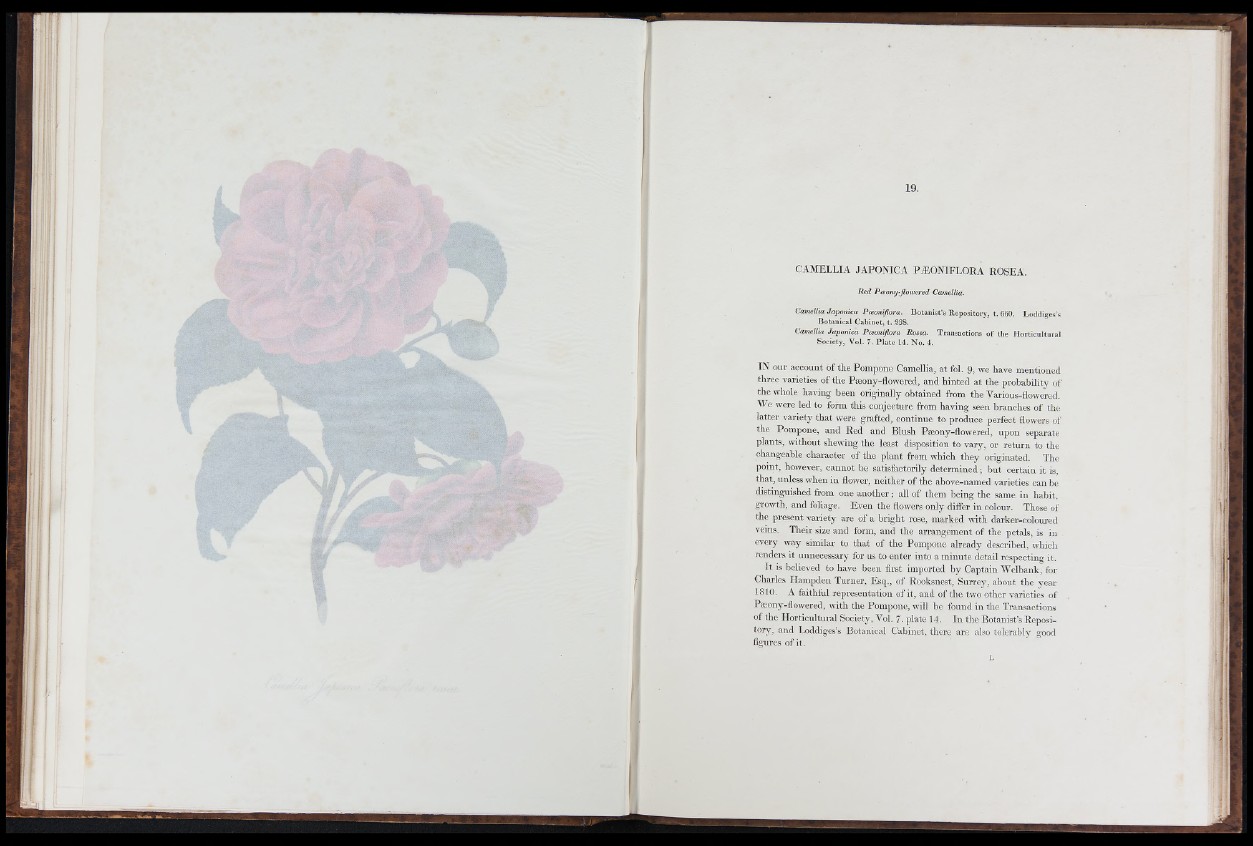
CAxMELLIA JAPONICA PfEONIFLORA ROSEA.
R e d P feo n y -flow e red Camellia.
Camellia Ja pónica P a o n iflo ra . B o ta n is t’s R e p o s ito ry , t. 660. L o d d ig e s ’s
B o ta n ic a l C ab in e t, t . 238.
Camellia Ja pónica P teoniflora Rosea. T ra n s a c tio n s o f th e H o r tic u ltu r a l
Soc ie ty, V o l. 7. P l a t e 14. N o . 4.
IN our account of the Pompone Camellia, at fol. 9, we have mentioned
three varieties o f the Paony-flowered, and hinted at the probability of
the whole having been originally obtained from the Various-flowered.
We were led to form this conjecture from having seen branches of the
latter variety th a t were grafted, continue to produce perfect flowers of
the Pompone, and Red and Blush Peeony-flowered, upon separate
plants, without shewing the least disposition to vary, or return to the
changeable character of the plant from which they originated. The
point, however, cannot be satisfactorily d etermined; b u t certain it is,
tha t, unless when in flower, neither of the above-named varieties can be
distinguished from one an o th e r; all of them being the same in habit,
growth, and foliage. Even the flowers only differ in colour. Those of
the present variety are o f a bright rose, marked with darker-colom-ed
veins. Their size and form, and the arrangement of the petals, is in
every way similar to th a t of the Pompone already described, which
renders it unnecessary for us to enter into a minute detail respecting it.
I t is believed to have been first imported by Captain Welbank, for
Charles Hampden Turner, Esq., of Rooksnest, Surrey, about the year
1810. A faithful representation of it, and of the two other varieties of
Pseony-flowered, with the Pompone, will be found in the Transactions
of the Horticultural Society, Vol. 7- plate 14. In the Botanist’s Reposi-
tory, and Loddiges’s Botanical Cabinet, there are also tolerably good
figures of it.